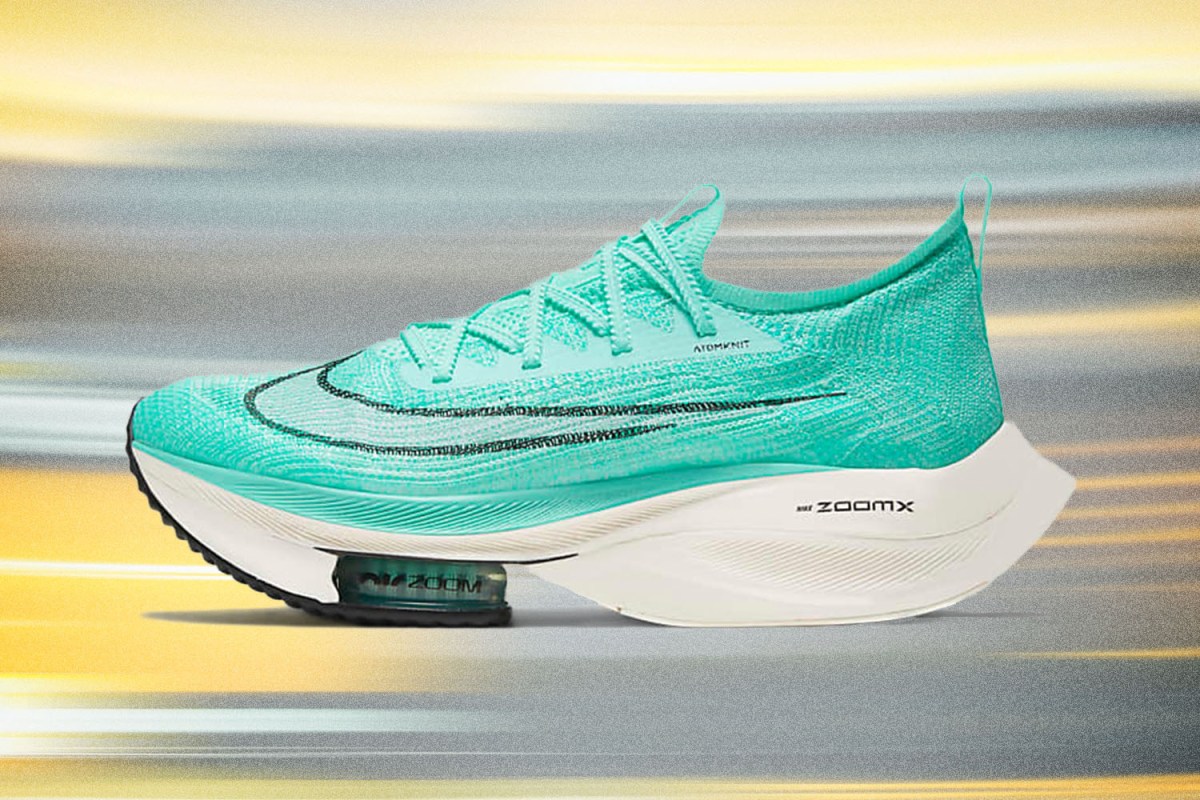Nota bene: If you buy through the links in this article, InsideHook may earn a small share of the profits.
There are many reasons Eliud Kipchoge is good at running: his VO2 max, efficient frame and Yoda-like demeanor all play a role. An entire adolescence of high-altitude training in the hills of Kenya likely helped, too. But how did the Usain Bolt of long-distance get this good? As in, sub-2:00:00 marathon good? Has it gotta be the shoes?
Nike collaborated with Kipchoge for years, often visiting his running compound in Kaptagat, Kenya to hear his thoughts on early prototypes of what would become the Air Zoom Alphafly NEXT%. While some in the running community, from grisled writers, to high school phenoms, to Bolt himself, have criticized the era of carbon-plated shoes and spikes that Nike ushered in — one that began when Kipchoge ran a 1:59:40 in Vienna — the 36-year-old seems at peace with his involvement.
In fact, he once told Nike: “I think this shoe will be part of my legacy.” That’s a rare level of acceptance from a superstar athlete. The right gear can make good runners great. And, apparently, it can make the best runners generational. Kipchoge knows (and even seems to hope) that one day his records will be toppled. But for now, he’s still the fastest man in the world, running in the fastest shoe Nike’s ever released.
I was fortunate enough to recently get my hands on a pair, and finally go full float state in a pair of Air Zoom Alphaflys. They generally sell out like concert tickets, but Nike has restocked them right in time for marathon season. What does it feel like to run in them? Let’s just say it’s no surprise that most of the sport’s top dogs are now chasing Kipchoge in Alphaflys of their own.
A sea of Alphaflys. Spot Kipchoge in the very center.
Photo by Clive Brunskill/Getty Images
A big buzzword for road racing shoes these days is propulsion. How much energy (which you’re stomping into the cement) can the shoe retain and return back into your stride? The first Nike shoes with carbon plates promised 4%, which pros and amateurs alike took to mean that they could tally up their total minutes spent running a marathon, multiply by 0.04, and immediately shave off the result. Obviously, that doesn’t always turn out to be the case.
Faster times are the obvious endgame for Nike, but the brand’s gotten a bit cagier about the exact economy of its latest releases. Suffice to say, the Air Zoom Alphaflys will absolutely help you conserve some percentage of energy, and over the course of a training session or race, help you achieve a faster time with less effort. That’s thanks in part to the two Tide pods situated at the forefoot (officially called Air Zoom pods), a full-length carbon plate and a heaping of foam at the heel, which — don’t worry — passes all international “stack height” standards.
All told, it’s impossible for a runner, no matter his level, to not feel faster in these shoes. There’s a reason they’re uncomfortable to walk around in — the shape is designed to keep you on your toes, to embrace the continuous falling that is running. Just as there are shoes out there ideal for trails, or track, or long Sunday runs, these are for running fast. It’s weird to think of shoes as a machine, but they were engineered for an express purpose and they perform it spectacularly well. I ran my fastest eight-miler in a year with these on last week.

The infamous carbon plate.
Nike
How do they compare to other offerings in Nike’s NEXT% series? I personally prefer them to Nike’s other best-selling energy-returning shoe, the ZoomX Vaporfly. I’ve logged miles in both now, and the Alphaflys feel better suited for longer distances than the Vaporflys. While the Vaporflys are stupid fast — I actually ran my best mile ever in them this past summer — their angularity towards the toe can feel a bit restrictive deep into a run.
The Alphaflys, by contrast, feature the infamous pods and feel a bit more robust on the roads. Plus, and this is no small thing, they’re easier to get your foot into. I’ve accidentally damaged the heels of shoes in the past, trying to rush my way out the door. It’s not a great feeling, and the narrow Vaporfly, which features no helpful tag at the back, has never made it any easier.
An additional note on the construction: both the Alphaflys and Vaporflys are now part of Nike’s Flyknit family, meaning they’re constructed with flexible mesh, instead of a rubbery, one-piece upper. Thank goodness for that. Breathability and flexibility were two of the main critiques lobbed at Nike’s NEXT% series. Those have been roundly squashed; the Alphafly specifically features a fabric called AtomKnit, which repels water as well as it takes turns. (I waited until it rained the other day for my run, to confirm for sure.)
Ultimately, is the Alphafly worth nearly $300 of your money? Do you really need to wear the GOAT’s gear in your marathon this fall, let alone a Turkey Trot? That depends entirely on your running goals. If you’re just looking to stay in shape, or train for a different sport, or keep the pace easy on your aging knees, you should probably look elsewhere. But for the runner hunting a PR, and looking to inject some fun into his training regimen — track workouts, tempo runs and the like — it’s hard to argue with the fastest shoe in the world.
Sign up for more daily deals and recommendations from InsideHook‘s, The Goods, delivered straight to your inbox.
https://www.insidehook.com/article/gear/nike-alphafly-running-shoe-review
 fashion rec fashion wanted
fashion rec fashion wanted



